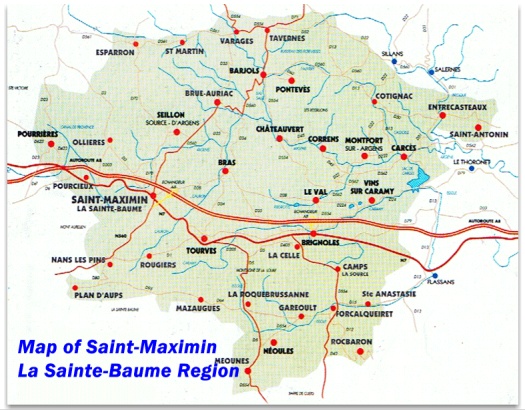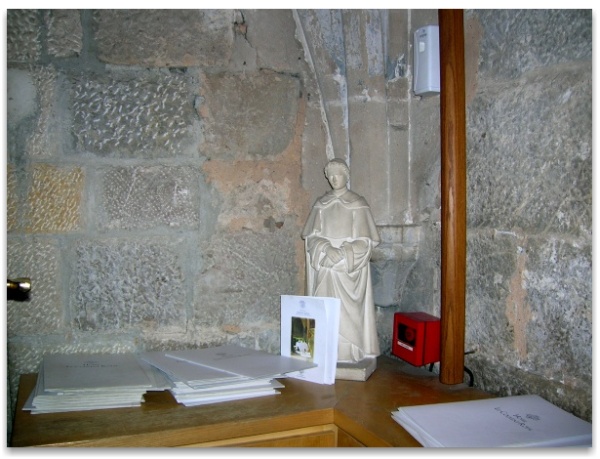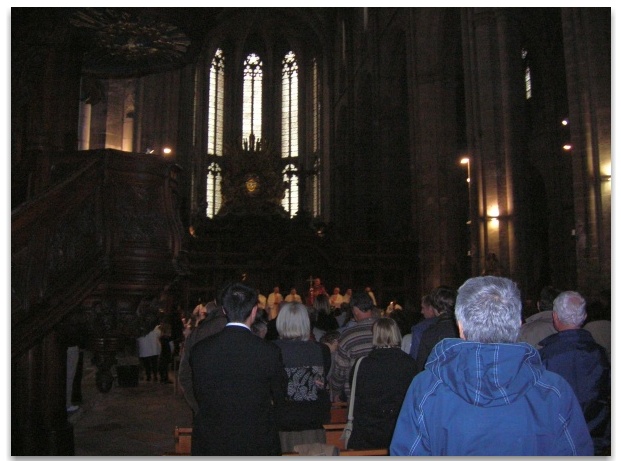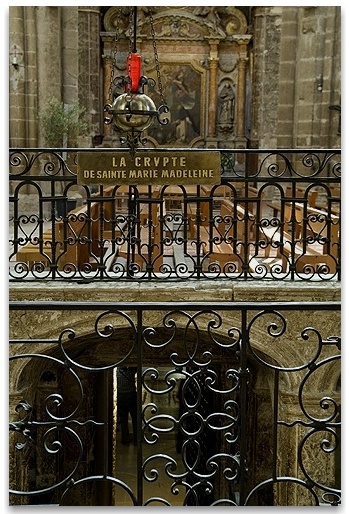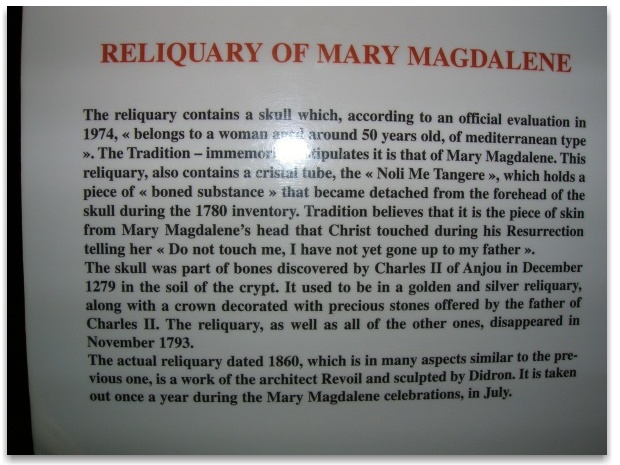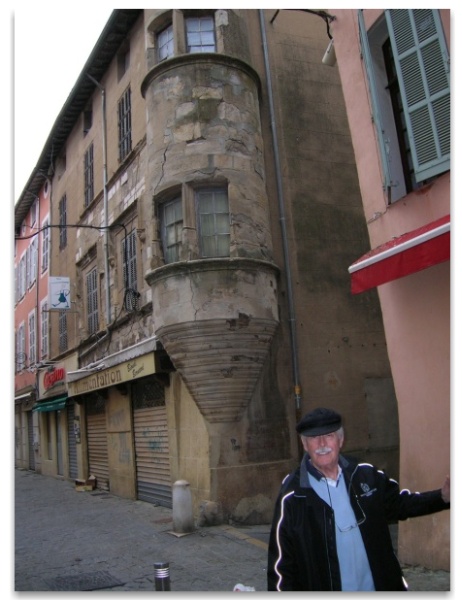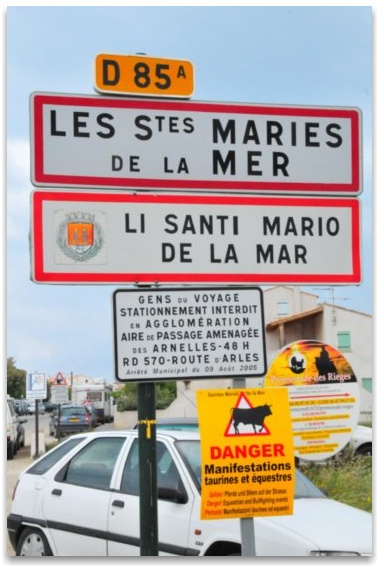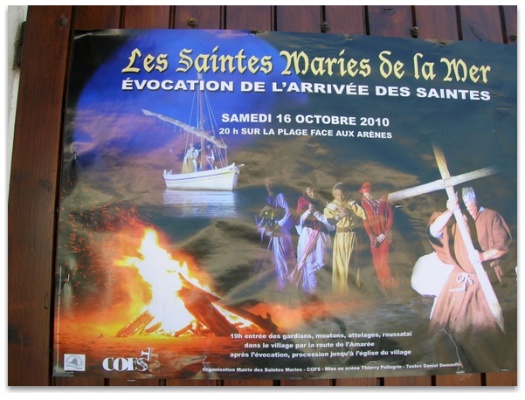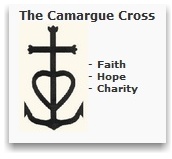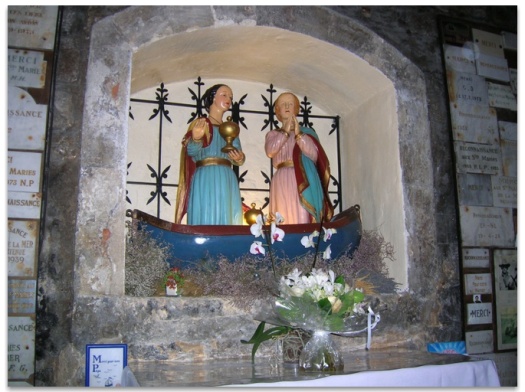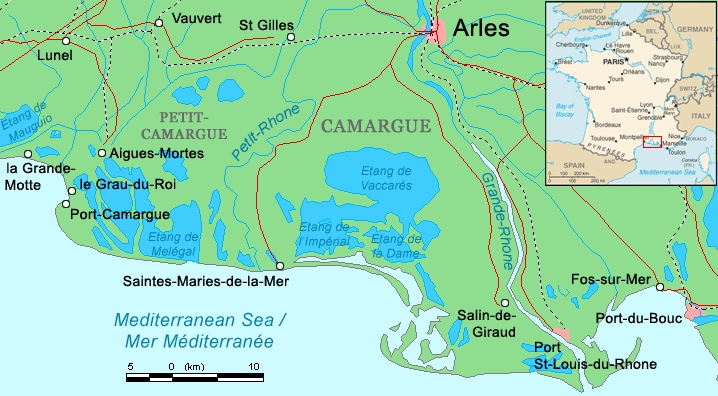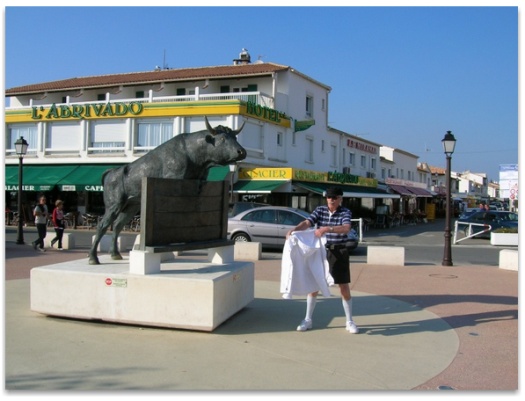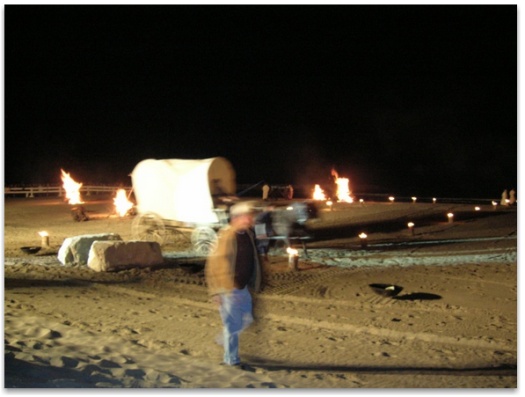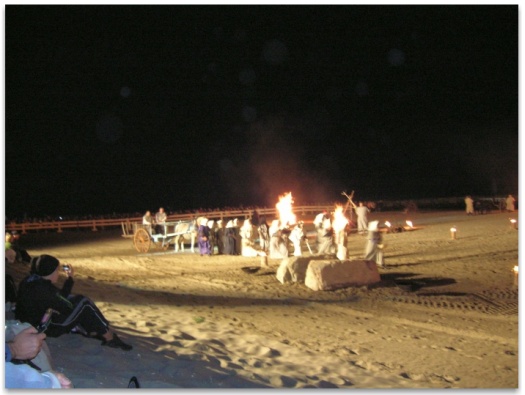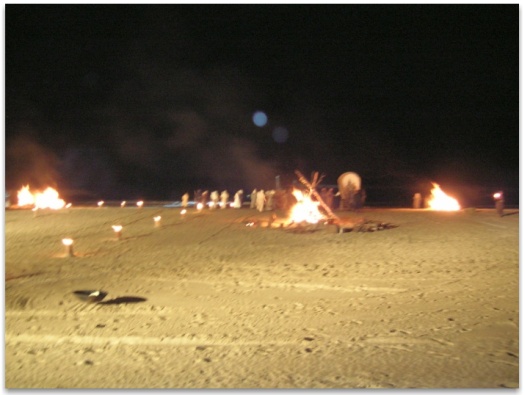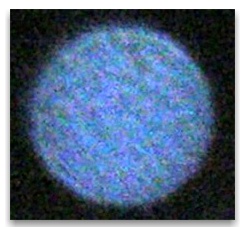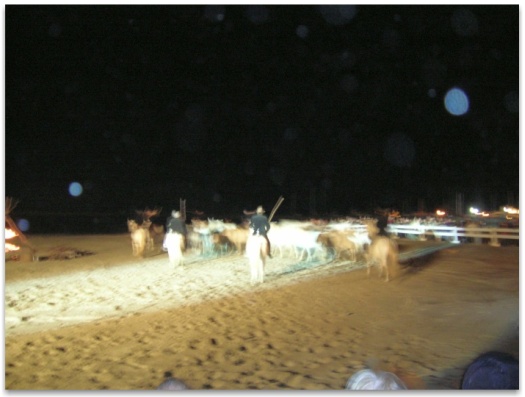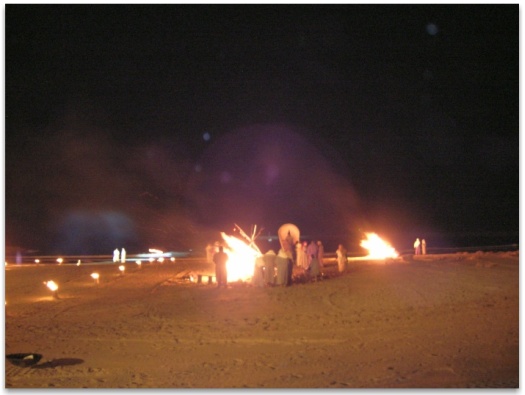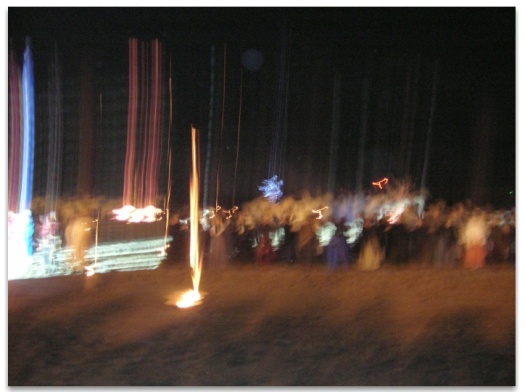The Cave of Mary Magdalene at la Sainte-Baume

Looking towards the Monastery and Grotto at la Sainte-Baume

View of la Sainte-Baume landscape
We are staying at the wonderful abbey hostelerie in Saint Maximin, next to the Basilica, thinking of the message from Alcheringa and him saying we would visit the cave. Today I am at first in some doubt, for it is pouring with rain this morning (although I am given insight that the weather will clear later in the day).
We have booked another night here at Saint Maximin and found, with some difficulty, our way out of town for the 35 minute drive to first the little abbey at Plan d’Aups and then Sainte Baume, which means cave or grotto. It is also the name of the mountain. Half the journey is climbing a dangerously narrow road up the mountain from Saint Maximin. My heart is in my mouth the whole time as we have a large hire car even though we would have preferred a smaller car to travel around the narrow streets in the little villages of Provence.
According to the ancient Gypsy legend Saint Marie Madeleine (Mary Magdalene) arrived by boat with her exiled companions at Saint Marie de la Mer in the Camargue. She then traveled with Maximin and her brother through Provence on a mission of evangelization. True to her beliefs and ideology she decided to spend her last years in contemplation in the Saint Baume mountain cave.
There is a long history of what has happened to the cave over the years. The 13th century saw the peak of pilgrimages in Christian Europe. “The Kings Way” is the road through the Sacred Forest to the Cave. Thousands of pilgrims have come to this holy site over the centuries, including eight popes and eighteen kings. (Hence the name Chemin des Roys, or, The Kings Way.) Four Dominican monks still live up there.
We arrive at Plan d’Aups at 700 metres. The wind is so strong as we alight from our car – we are nearly blown off our feet and it begins to pour with rain. Umbrellas are out of the question – they will easily be blown inside out.
We decide to have a cup of hot coffee at the little store and wait to see if the weather will improve. When we finish our coffee, we hear a bell ringing, calling people to a service to be held at the little chapel next door.
The chapel has wonderful paintings on the wall depicting the three Marys and others arriving by boat from the Holy Lands after fleeing danger after Jesus had been crucified.
Madeleine’s hair is painted long and red. Looking more Celtic than Arab-like. Didn’t our ancestors know more than what has been recorded? I am reminded of the Scottish research into the early royal family where the Mother Mary’s grandmother was said to be married to a Scottish king. (refer: http://www.sacredconnections.co.uk

Painting of Mary Magdalene inside the small chapel at Plan d’Aups.
This first photo reminds me of the simple white buildings
where the Essenes lived in the Holy Lands

Scene of Mary Magdalene inside the small chapel at Plan d’Aups
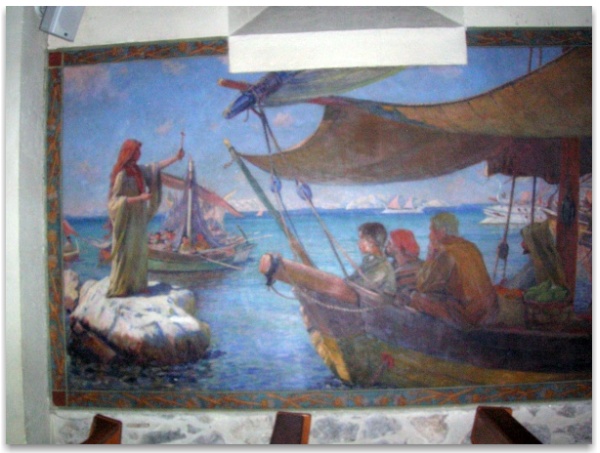
Painting of Mary Magdalene inside the small chapel at Plan d’Aups
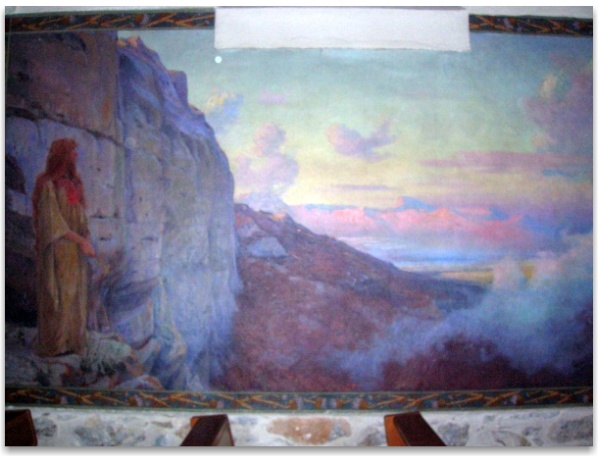
Painting of Mary Magdalene inside the small chapel at Plan d’Aups
The priests conduct the morning ceremony wearing robes of white with green chasubles and on the robes is the symbol of the Chi-Rho.
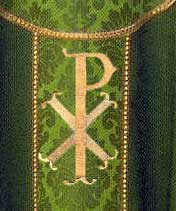
Chasuble with Chi-Rho
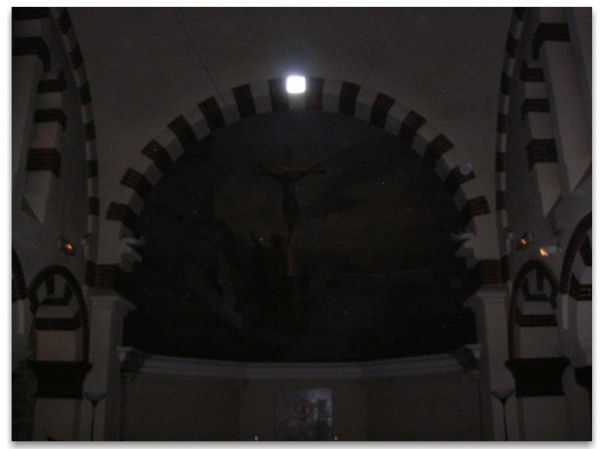
Inside the small chapel at Plan d’Aup – an orb is clearly visible on the right.
It is clear we are meant to stay for the service – for by the time it finished the weather clears a little and we begin walking through and up into the Sacred Forest. We almost don’t make the climb, but John changes his mind and we go.
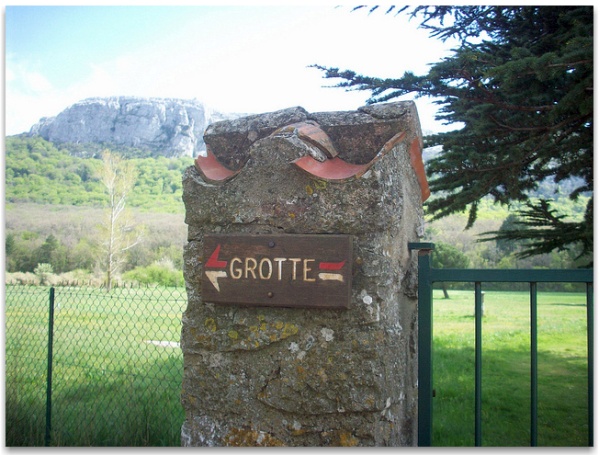
Signpost – to the Grotto of la Sainte-Baume
We reach the entrance of the wonderful ancient forest. Just as we do, there arrives two young men and a woman dressed in medieval garments. John greets them in French and they call out they are going into the forest to collect ‘truffles’. It seems strange, as if we have stepped into a parallel universe. Another time completely and as John is speaking to them, I am experiencing a feeling of familiarity as if I have walked this place before.
Quietly shaking within myself I remember the body as a Pope. I have been here before, in another life. I don’t like that life memory, but I am part of it. It is in my Soul memory. I will speak of it more, but not now. I ask John to walk with me on the original path that leads up the mountain to the cave. Where the young people walk is along “The King’s Way” but I choose not to walk that path again.
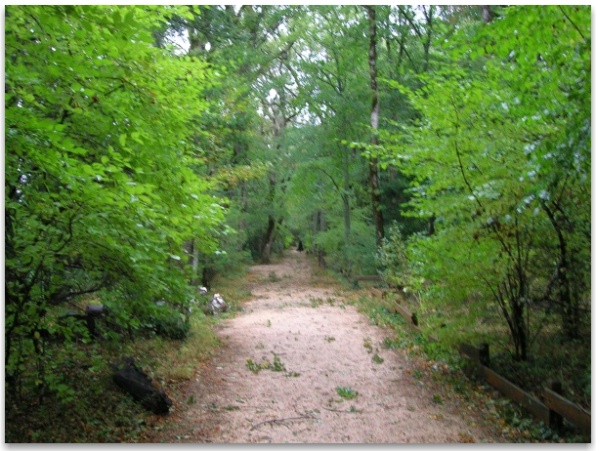
Pathway through the forest to the grotto la-Sainte-Baume
(To the left is the wider path, wide enough for carriages and if you look closely you can just see a full length, high collared, black flaring cloak disappearing into the distance)

Steps through the forest to the grotto la Sainte-Baume
The photo on the right is the original path the monks used, and I like the idea of becoming close to the nature spirits that exist in this magical forest.
We walk for 90 minutes, up and up—still cold, windy, wet and slippery under foot. Some of the trees are down – let alone small branches. As we reach about half way up the mountain through the forest everything becomes peacefully calm, almost as if we are walking in a different dimensional frame, yet again, with no sign of the three young people collecting truffles this time.
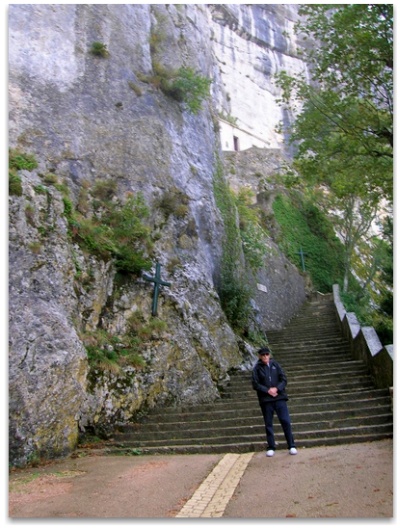
John about to climb the steps to the grotto la Sainte-Baume

The Entrance to the Abbey at la Sainte-Baume
Eventually we come to changes made to the entrance of small abbey. I say ‘changes’ for I am still remembering that other time I visited. 150 steps, representing the Psalms of David or the 150 Hail Marys of the Rosary, are built up to the doorway with a sign showing the different order of monks that have been in residence over the centuries.

Showing the different orders of religious and monks who have maintained the grotto for centuries

Doorway to the grotto at la Sainte-Baume
To the left, before you enter the doorway is the scene of the three Marys kneeling at Jesus’ feet as he hangs from the cross. Mary Magdalene is still showing long red hair.
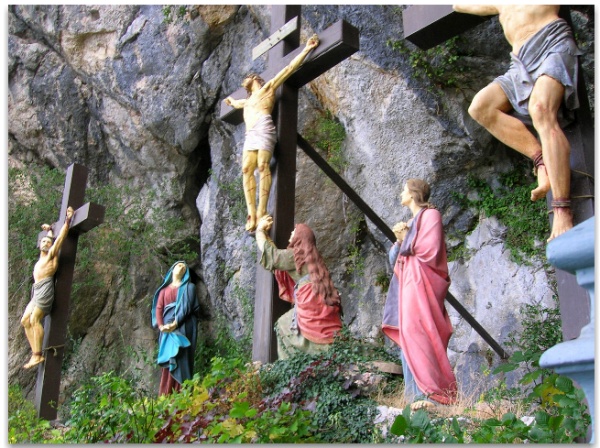
Crucifixion showing the three Marys at the entrance to the Grotto

Looking back towards Plan d’Alps showing just how far we have climbed
I take a photo past the wall showing how far we have climbed and then we enter into the abbey. There are no monks insight, or anybody else for that matter; we are alone.

Stained glass at the entrance to the grotto at la Sainte-Baume. An orb is visible on the left of the doorway
Overwhelmingly Magdalene’s presence is here – very strongly. The Church is inside a massive cave where water is still dripping from the ceiling. John is the first to kneel in prayer and I am so touched – usually he just waits to see what I do. The moment is very special and bonding for us. Bless him!
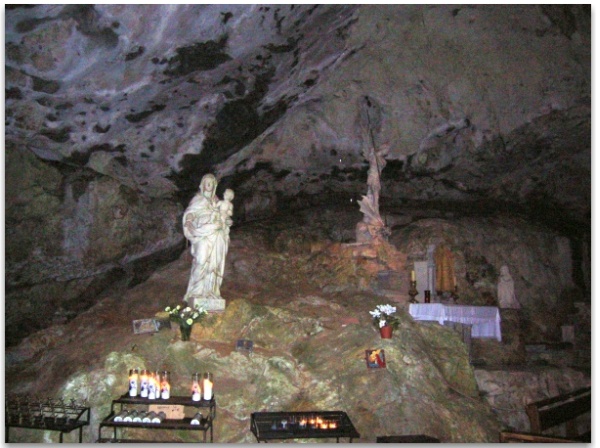
Votive candles lit before a statue of the Virgin and Child in the grotto
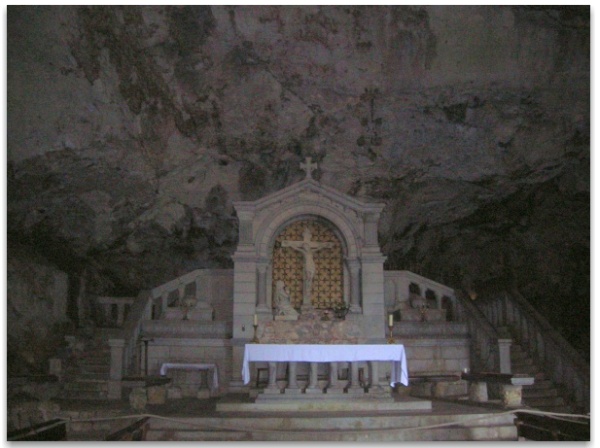
Main altar in the grotto at la Sainte-Baume

Statue of St Mary Magdalene being raised up by angels at la Sainte-Baume

View of the statue of St Mary Magdalene being raised up by angels at la Sainte-Baume

Former location of the relicts at la Sainte-Baume
(These relics were moved back to the Baslica in Saint-Maximin)
It has been a difficult drive up from 300 metres to 700 metres and then the walk is a real challenge not to slip in the mud. Heel, then toe keeps us safe; John tells me that is how he was trained to walk in the army.
We feel truly uplifted up here – what a walk (and me not well after a bout of flu- with cough and chest noises). It is 1,000 metres above sea level.
Coming back down, John is wobbling a bit at the base of our walk – I have used a bush walking stick lifted from the forest – it has definitely helped to steady me. It is muddy, slippery and hilly to say the least, but beautiful.

John negotiates his way past a fallen tree on the pathway
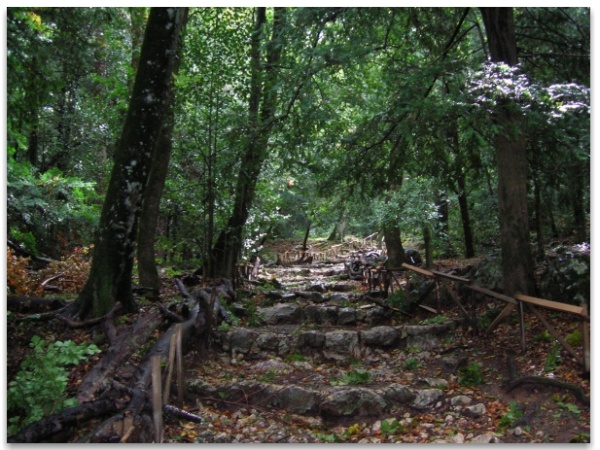
A wonderful picturesque forest
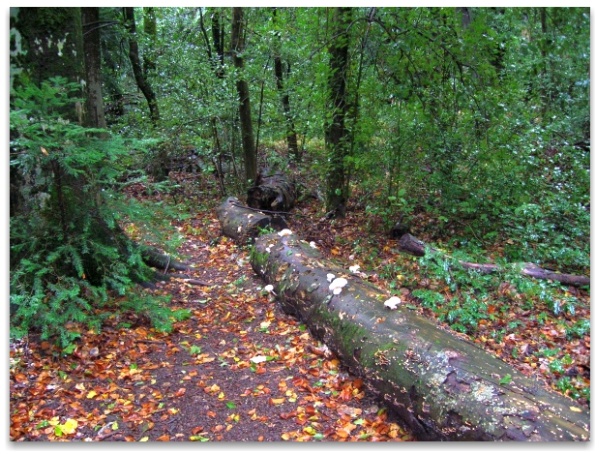
Logs on the pathway from the grotto la-Sainte-Baume

Another fallen tree on the pathway from the grotto la-Sainte-Baume

Valerie and her walking stick, suitably clothed against the elements!
It is a relief to arrive back at the chapel and the shop at Plan D’Aups to have another hot cup of coffee and a very appropriate madeleine cake! We meet a grateful forester whom John is able to advise, in French, about the trees falling down.
Now finally, we are driving back down the narrow road (easier on the inside this time – next to the mountain wall) and returning to the warmth and dryness of the Royal Convent Hostelerie at Saint Maximin.
A Miracle Photo?
It is only when this photo was uploaded onto the website that I can see Mary Magdalene’s effigy of her ‘remains’ appear on the roof of the cave entrance.
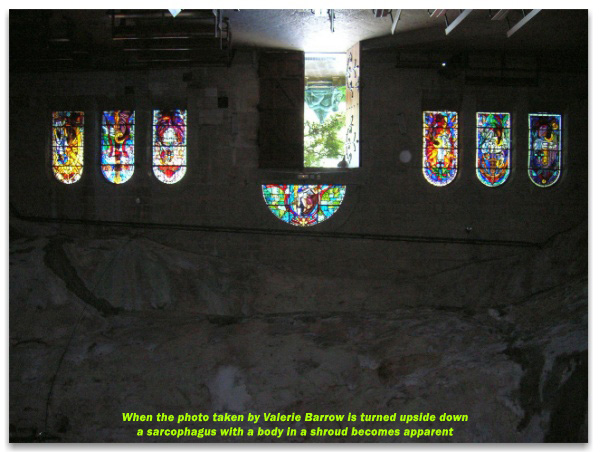
Turn the photo upside down; it suggests a body in a shroud, lying in a sarcophagus (Below the line)
Can you see it ? Her long hair is still intact although her face is reduced to a skeleton, and she is wrapped in a shroud.


